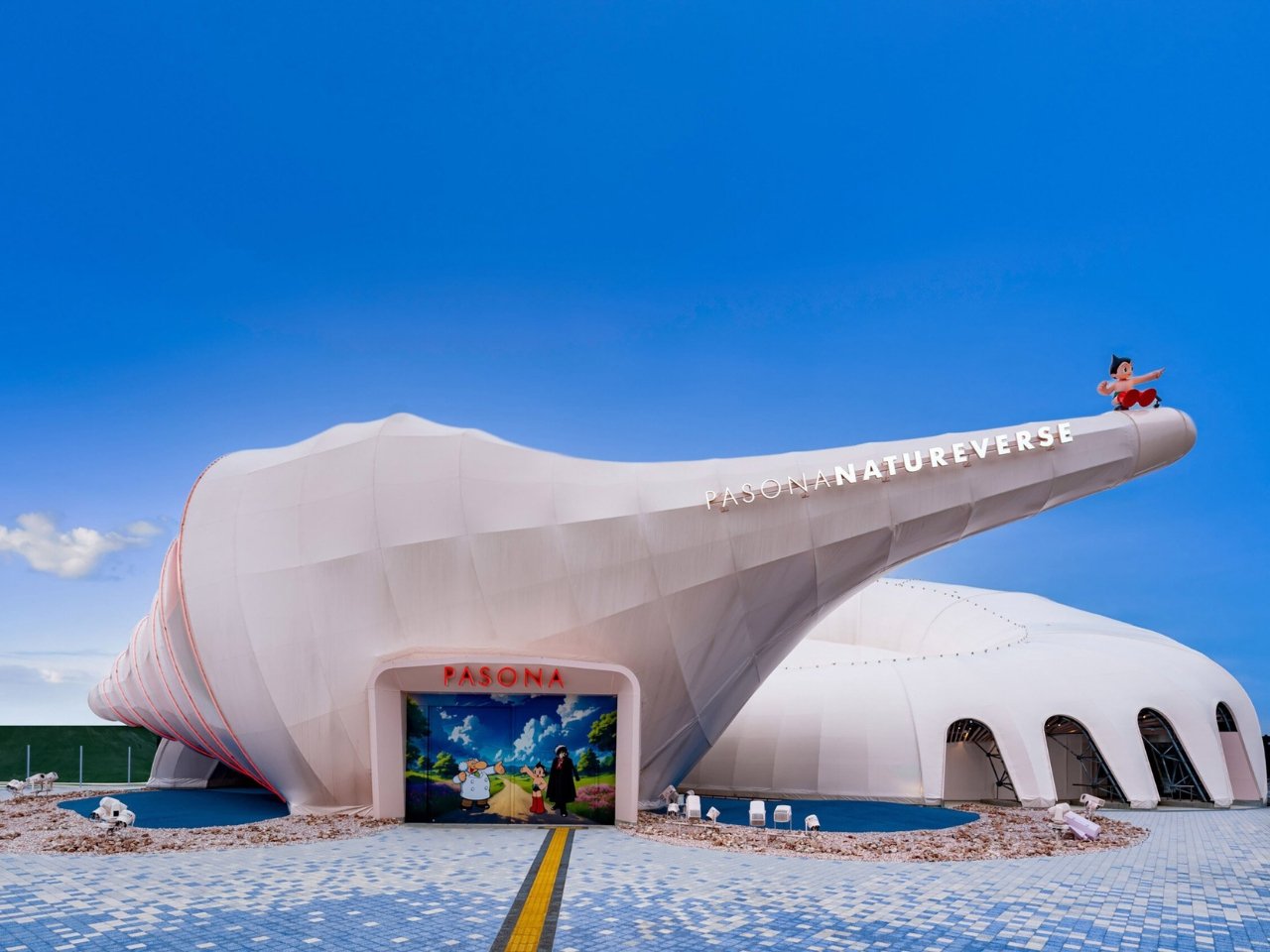Technology
Japan Unveils Illuminated Pavilion Inspired by Ancient Shells

The Pasona Natureverse Pavilion, a striking new structure inspired by a 400-million-year-old marine mollusc shell, was unveiled at Expo 2025 in Osaka, Japan. Designed by the local architecture studio The Design Labo, this impressive pavilion aims to connect visitors with the themes of life and evolution through its unique design and interactive exhibits.
The pavilion boasts a remarkable spiral shape, resembling a giant ammonite shell, spanning 43 meters in width. Accompanying this main structure is a smaller conch-like feature adorned with a sculpture of the popular cartoon character NEO Astro Boy. According to Satoshi Itasaka, CEO of The Design Labo, the pavilion symbolizes resilience and continuity. He noted, “Coiled shells have changed little for roughly 400 million years. Having survived repeated mass extinctions without being eliminated, they may represent a ‘completed form’ of life.”
Innovative Design and Functionality
The pavilion’s design not only captivates the eye but also emphasizes sustainability. It employs a water-based cooling system that coats the outer skin of the building with a thin film of water, significantly reducing the reliance on air conditioning. The spiral form aids in collecting and reusing rainwater, which is recirculated as grey water throughout the facility.
Inside, visitors embark on an engaging journey through three distinct zones: History of Life, Body and Mind/Bonds. Each area features a variety of interactive displays that explore physical, mental, and social health. Among the highlights is a unique tree-shaped sculpture illustrating evolutionary history, along with a lab-grown heart developed from induced pluripotent stem (iPS) cells.
“It is an experience that combines surprise with learning,” Itasaka remarked, describing the pavilion’s dynamic features, which include moving LED boxes and displays showcasing the world of soil microorganisms.
A Sustainable Future
Notably, the Pasona Natureverse Pavilion is designed to be demountable, constructed using a ball-jointed steel framework covered with a synthetic white membrane. After the Expo, it will be permanently relocated to Awaji Island, where it will serve as a cultural center, extending its life beyond the exhibition.
Once night falls, the pavilion transforms into a glowing spectacle, as color-changing lights illuminate the shell’s ridges and enhance its architectural form. This captivating illumination draws attention, creating an almost living presence that enchants onlookers.
The Design Labo’s approach demonstrates that sustainable architecture can be both functional and aesthetically pleasing. “We were reminded that biomimetic forms are not only structurally stable but also inherently beautiful,” Itasaka stated, emphasizing the importance of marrying functionality with artistic vision.
The Pasona Natureverse Pavilion stands as a testament to the potential of architecture to reflect deeper narratives about our connection to nature and the passage of time. By taking inspiration from ancient life forms, the pavilion invites visitors to contemplate their place in the natural world while igniting a sense of wonder and hope for the future. This project exemplifies how innovative design can inspire and educate, resonating with audiences and fostering a greater appreciation for the environment.
-

 Science3 months ago
Science3 months agoToyoake City Proposes Daily Two-Hour Smartphone Use Limit
-

 Health4 months ago
Health4 months agoB.C. Review Reveals Urgent Need for Rare-Disease Drug Reforms
-

 Top Stories4 months ago
Top Stories4 months agoPedestrian Fatally Injured in Esquimalt Collision on August 14
-

 Technology3 months ago
Technology3 months agoDark Adventure Game “Bye Sweet Carole” Set for October Release
-

 World3 months ago
World3 months agoJimmy Lai’s Defense Challenges Charges Under National Security Law
-

 Lifestyle4 months ago
Lifestyle4 months agoVictoria’s Pop-Up Shop Shines Light on B.C.’s Wolf Cull
-

 Technology3 months ago
Technology3 months agoKonami Revives Iconic Metal Gear Solid Delta Ahead of Release
-

 Technology3 months ago
Technology3 months agoApple Expands Self-Service Repair Program to Canada
-

 Technology3 months ago
Technology3 months agoSnapmaker U1 Color 3D Printer Redefines Speed and Sustainability
-

 Technology3 months ago
Technology3 months agoAION Folding Knife: Redefining EDC Design with Premium Materials
-

 Technology4 months ago
Technology4 months agoSolve Today’s Wordle Challenge: Hints and Answer for August 19
-

 Business4 months ago
Business4 months agoGordon Murray Automotive Unveils S1 LM and Le Mans GTR at Monterey









